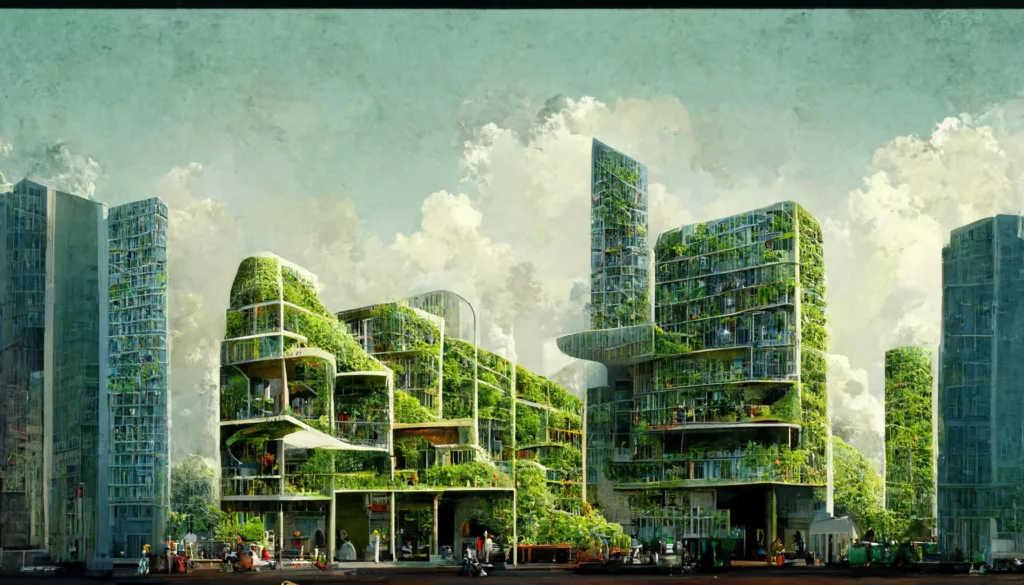
Table of Contents
Technological developments keep the building sector changing and changing forever. The use of Building Information Modeling (BIM) has completely changed how buildings are planned, built, and maintained. To achieve sustainable and environmentally friendly green building construction, we examine the need of using 6D BIM simulation in this blog post, which delves into the Smart Construction Era.
Understanding the Smart Construction Era
Definition of Smart Construction
Smart Construction refers to the utilization of advanced technologies to enhance efficiency, collaboration, and sustainability in the construction process. It encompasses various innovative tools and methodologies, with BIM at its core.
The Role of Technology in Construction
Technological advancements, including the Internet of Things (IoT), Artificial Intelligence (AI), and Augmented Reality (AR), play a pivotal role in the Smart Construction Era. These technologies contribute to streamlined workflows, improved communication, and data-driven decision-making.
Understanding 6D BIM
Before delving into the advantages of 6D BIM in green building construction, let’s first grasp the concept of 6D BIM. Traditionally, BIM has been primarily associated with 3D models, representing the physical characteristics of a structure. However, 6D BIM takes this a step further by incorporating the dimension of time and cost, providing a comprehensive view of a project’s lifecycle.
The Dimensions of BIM
3D BIM
3D models enable visualizing the physical aspects of a building project, enhancing design accuracy and collaboration among stakeholders.
4D BIM
Adding the dimension of time, 4D BIM assists in project scheduling, sequencing, and optimizing construction processes.
5D BIM
The inclusion of cost-related data in 5D BIM aids in accurate budgeting, cost estimation, and financial planning throughout the project.
6D BIM
The time and cost dimensions are extended further in 6D BIM to include sustainability, operation, and maintenance aspects, creating a holistic approach to building information modeling.
Advantages of 6D BIM in Green Building Construction
Lifecycle Sustainability Planning
The implementation of 6D BIM allows for a comprehensive analysis of a building’s environmental impact throughout its entire lifecycle. This includes assessing the energy consumption, carbon footprint, and potential environmental effects associated with materials used. By considering these factors at the planning stage, construction projects can align with green building standards and certifications.
Energy Efficiency Optimization
With 6D BIM, architects and engineers can simulate the energy performance of a building, enabling the identification of opportunities for energy efficiency enhancements. This proactive approach ensures that green building principles are integrated from the design phase, resulting in structures that are not only environmentally friendly but also cost-effective in terms of energy consumption.
Waste Reduction and Recycling Strategies
6D BIM facilitates the development of waste reduction strategies by providing a detailed analysis of materials used in construction. This includes tracking the origin, composition, and disposal methods of materials. By optimizing material usage and promoting recycling practices, construction projects can significantly reduce their environmental impact and contribute to sustainable waste management.
Predictive Maintenance and Long-Term Performance
Beyond the construction phase, 6D BIM enables predictive maintenance by anticipating potential issues and recommending preventive measures. This ensures that buildings continue to operate efficiently and sustainably over an extended period. Predictive analytics integrated into the BIM model can forecast equipment lifespans, reducing the need for reactive maintenance and minimizing environmental disruptions.
Cost-Efficient Green Construction
Integrating sustainability into construction projects often raises concerns about increased costs. However, 6D BIM provides a nuanced understanding of the financial implications of green building practices. By factoring in lifecycle costs, including energy savings and operational efficiencies, stakeholders can make informed decisions that balance environmental responsibility with economic considerations.
Enhanced Collaboration and Communication
The multidimensional nature of 6D BIM fosters improved collaboration among project stakeholders. Architects, engineers, contractors, and facility managers can access a unified platform, sharing real-time information about design changes, material specifications, and sustainability goals. This streamlined communication enhances the collective effort towards green building objectives.
Challenges and Considerations
While the benefits of implementing 6D BIM for green building construction are evident, certain challenges and considerations must be addressed:
Data Accuracy and Integration
The success of 6D BIM relies on the accuracy and integration of data from various sources. Achieving seamless interoperability among different software platforms and ensuring the reliability of environmental data are ongoing challenges that need attention.
Skill Development
The adoption of 6D BIM requires a workforce with advanced skills in data analysis, simulation, and sustainability practices. Training programs and educational initiatives are crucial for preparing professionals to navigate the complexities of this integrated approach.
Standardization and Regulation
Standardizing 6D BIM practices and establishing regulatory frameworks for green building standards are essential for widespread adoption. Clear guidelines and industry-wide collaboration will contribute to a more consistent and effective implementation of these technologies.
Conclusion
The convergence of smart construction practices and green building principles marks a significant shift towards a more sustainable and environmentally conscious industry. The implementation of 6D BIM Simulation emerges as a key enabler in this transition, offering a holistic approach that considers the entire lifecycle of a construction project. As technology continues to advance, and industry embraces innovative solutions, the smart construction era holds the promise of creating buildings.
Previous Blog: How BIM Transforms Structural Design and Analysis?

